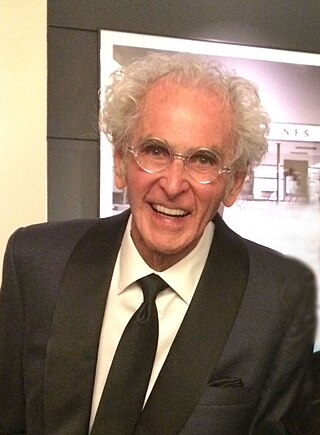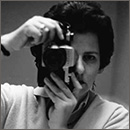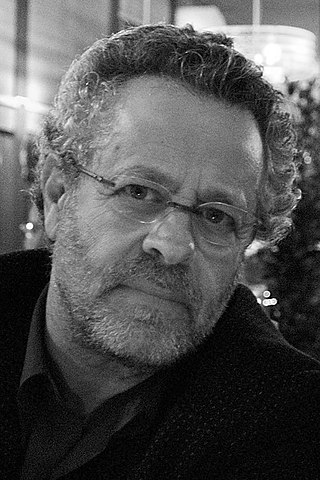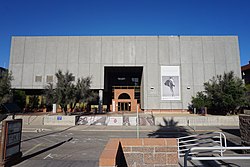
Ansel Easton Adams was an American landscape photographer and environmentalist known for his black-and-white images of the American West. He helped found Group f/64, an association of photographers advocating "pure" photography which favored sharp focus and the use of the full tonal range of a photograph. He and Fred Archer developed a system of image-making called the Zone System, a method of achieving a desired final print through a technical understanding of how the tonal range of an image is the result of choices made in exposure, negative development, and printing.

Jerry Norman Uelsmann was an American photographer.

Richard Avedon was an American fashion and portrait photographer. He worked for Harper's Bazaar, Vogue and Elle specializing in capturing movement in still pictures of fashion, theater and dance. An obituary published in The New York Times said that "his fashion and portrait photographs helped define America's image of style, beauty and culture for the last half-century".
Wynn Bullock was an American photographer whose work is included in over 90 major museum collections around the world. He received substantial critical acclaim during his lifetime, published numerous books and is mentioned in all the standard histories of modern photography.

Nancy Wynne Newhall was an American photography critic. She is best known for writing the text to accompany photographs by Ansel Adams and Edward Weston, but was also a widely published writer on photography, conservation, and American culture.

Ruth-Marion Baruch, was a German-born American photographer, remembered for her pictures of the San Francisco Bay Area in the 1960s.
Linda Connor is an American photographer living in San Francisco, California. She is known for her landscape photography.

Sonya Noskowiak was a 20th-century German-American photographer and member of the San Francisco photography collective Group f/64 that included Ansel Adams and Edward Weston. She is considered an important figure in one of the great photographic movements of the twentieth century. Throughout her career, Noskowiak photographed landscapes, still lifes, and portraits. Her most well-known, though unacknowledged, portraits are of the author John Steinbeck. In 1936, Noskowiak was awarded a prize at the annual exhibition of the San Francisco Society of Women Artists. She was also represented in the San Francisco Museum of Art’s “Scenes from San Francisco” exhibit in 1939. Ten years before her death, Noskowiak's work was included in a WPA exhibition at the Oakland Museum in Oakland, California.

Johan Hagemeyer was a Dutch-born horticulturalist and vegetarian who is remembered primarily for being an early 20th century photographer and artistic intellectual.
Alma Ruth Lavenson was an American photographer active in the 1920s and 1930s. She worked with and was a close friend of Ansel Adams, Imogen Cunningham, Edward Weston and other photographic masters of the period.
Milton Halberstadt (1919–2000) was a US photographer in fine art and commercial photography who left a body of work covering genres from abstract art to commercial photography.

Allan Douglass Coleman is an independent American critic, historian, educator, and curator of photography and photo-based art, and a widely published commentator on new digital technologies. He has published eight books and more than 2000 essays on photography and related subjects. He has lectured and taught internationally; his work has been translated into 21 languages and published in 31 countries.
Don Worth was an American photographer. His childhood on an Iowa farm inspired an abiding love of exotic horticulture, which later became the primary focus of his photography. He attended Juilliard as well as the Manhattan School of Music, receiving a graduate degree in piano and composition in 1951. During college, he began photographing and eventually became Ansel Adams' first full-time assistant in 1956. He taught photography at San Francisco State University for thirty years becoming a Professor Emeritus of Art.
Ray Mortenson is a New York-based landscape photographer who has documented the metropolitan corridor of the US' northeastern landscape since the 1970s. From 1979-84, he made black and white photographs of the industrial tidal marshes in the New Jersey Meadowlands and abandoned buildings in The Bronx. Mortenson's work has been widely exhibited since the 1980s and is held in the permanent collections of over forty institutions in the US, Canada, France and Japan.

Dody Weston Thompson was a 20th-century American photographer and chronicler of the history and craft of photography. She learned the art in 1947 and developed her own expression of “straight” or realistic photography, the style that emerged in Northern California in the 1930s. Dody worked closely with contemporary icons Edward Weston, Brett Weston and Ansel Adams during the late 1940s and through the 1950s, with additional collaboration with Brett Weston in the 1980s.

William Jay was a photographer, writer on and advocate of photography, curator, magazine and picture editor, lecturer, public speaker and mentor. He was the first editor of "the immensely influential magazine" Creative Camera (1968–1969); and founder and editor of Album (1970–1971). He is the author of more than 20 books on the history and criticism of photography, and roughly 400 essays, lectures and articles. His own photographs have been widely published, including a solo exhibition at the San Francisco Museum of Modern Art. He is known for his portrait photographs of photographers.
Musya S. Sheeler (1908–1981), born Musya Metas Sokolova, was a Russian dancer who, at age 15, fled with her family from the Russian Revolution to the US, where she became a photographer. Her work was exhibited at the Museum of Modern Art three times and featured in magazines including Life and Vogue.
Ann Mandelbaum is an American artist and photographer. She has an MA in Media Studies from The New School and an MFA from Pratt Institute in Painting and Drawing. She retired in 2021 after over 40 years teaching Fine Art and Photography at Pratt Institute.
Rebecca A. “Becky” Senf is an American writer, and curator working in the field of photography. She is the Chief Curator at the Center for Creative Photography (CCP). She joined the CCP as Norton Family Assistant Curator in 2007, which was a joint appointment with Phoenix Art Museum, and was promoted to Chief Curator in 2016.

Arthur Ollman is an American photographer, author, curator, professor emeritus (San Diego State University, and founding director of The Museum of Photographic Arts, San Diego. He served as MoPA director from 1983 to 2006, and as director of the School of Art, Design and Art History, SDSU, from 2006 to 2011. He was president of the board of directors for the Foundation for the Exhibition of Photography and has authored and contributed to more than twenty-five books and catalogs.















